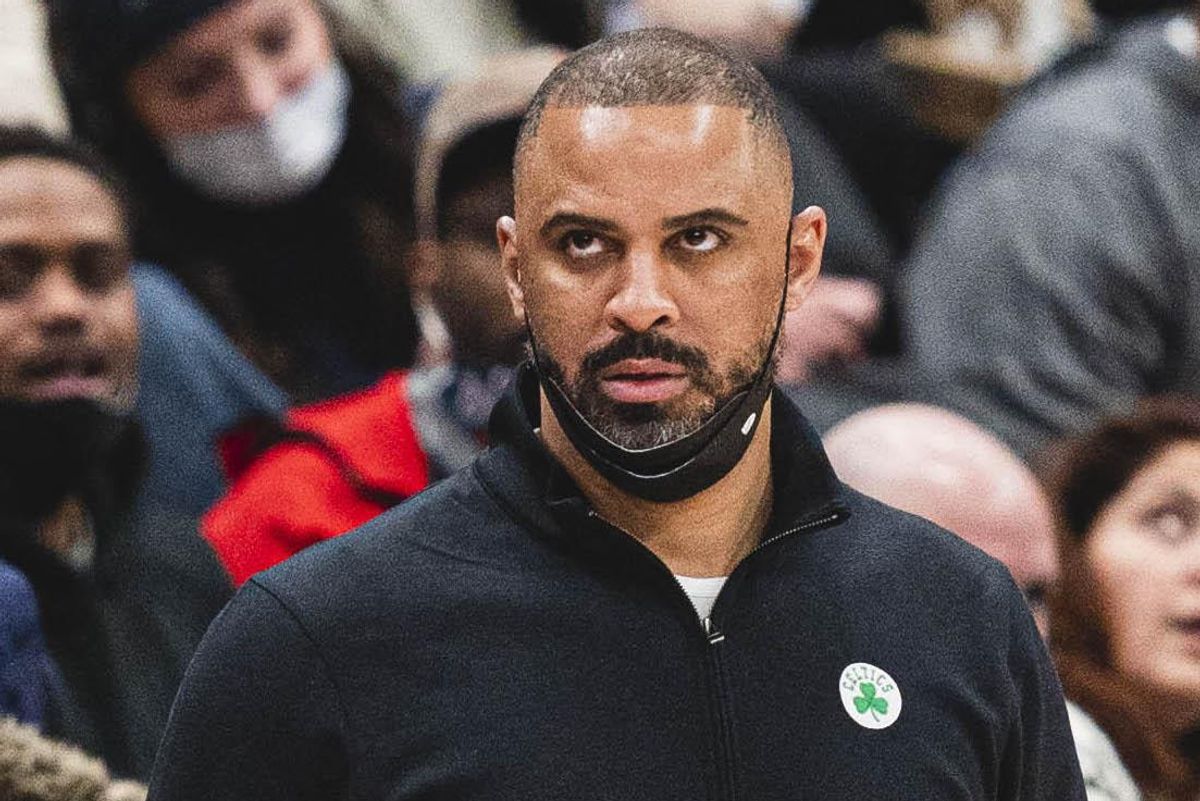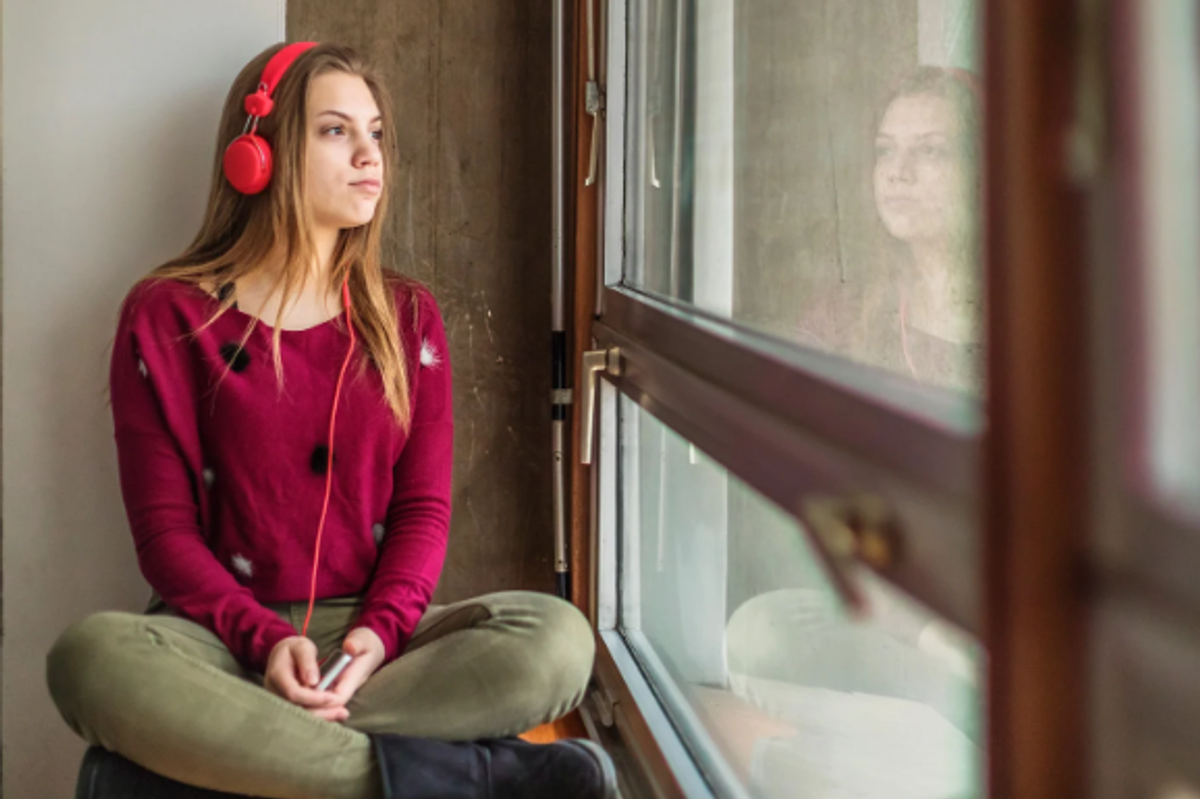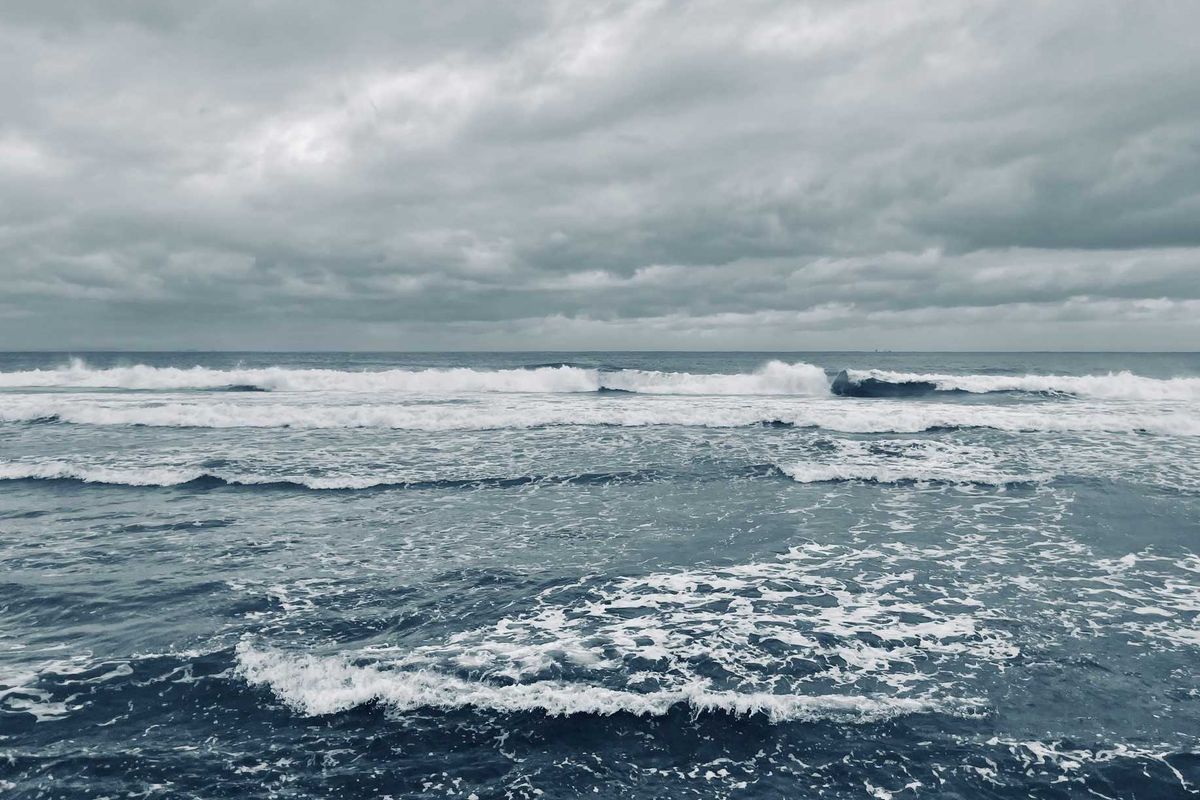Half of the head coaches in the NBA are now Black
More great progress in the world of sports.

Boston Celtics head coach Ime Udoka is one of eight new Black head coaches in the NBA.
It’s been almost 60 years since Bill Russell became the first Black head coach in the NBA. In the years since, there have been 260 regular coaches that have come and gone, and only 1 in 3 have been Black. Most of them haven’t lasted more than three years in their first job—they also haven’t gotten a chance to have another head coaching position. But the times they are a-changin'. Currently, 15 of the 30 head coaches in the NBA are Black. And it’s about time.
Boston’s Ime Udoka, Sacramento’s Mike Brown, Portland’s Chauncey Billups, Dallas’ Jason Kidd, Orlando’s Jamahl Mosley, Washington’s Wes Unseld Jr., New Orleans’ Willie Green and Los Angeles’ Darvin Ham are the eight newest full-time head coaches in the NBA. They join Detroit’s Dwane Casey, Phoenix’s Monty Williams, Cleveland’s J.B. Bickerstaff, Philadelphia’s Doc Rivers, the Los Angeles Clippers’ Tyronn Lue, Houston’s Stephen Silas and Atlanta’s Nate McMillan, who were all head coaches last year.
“It means a lot,” Brown, who will take over as head coach in Sacramento next season after finishing the current season as the assistant coach for Golden State, said.
“When my son, and my oldest son’s about to have his first son, when they turn on the TV and they see people that look like them leading an NBA team on the sidelines, it can be inspiring. For me, carrying the torch and then passing it to the next generation is something that I think about often — not just for my family, but for others out there.”
The last time there were this many Black head coaches in the NBA was the 2012-13 season. There has been no explanation as to why it took almost 10 years to get back to that number, but there are some theories.
“This is not a sports issue,” Nate McMillan, the head coach for the Atlanta Hawks said back in February. “It’s a society issue that the opportunities sometimes certain people, they don’t get the opportunities because of the color of their skin.”
He also gave credit to Dallas Mavericks owner Mark Cuban for making sure the organization has not only a Black head coach (Jason Kidd) but other Black people in the room. Aside from Kidd, there are three prominent Black people in the organization: Cynt Marshall (chief executive officer), Nico Harrison (general manager and president of basketball operations) and Michael Finley (assistant general manager and assistant vice-president of basketball operations). Marshall is the first Black female CEO in the history of the NBA.
“I think that’s just what Mark has done is really open his mind to interviewing people and giving them an opportunity where they have the skills to fit into those positions. They’ve done well and I think that’s great,” said McMillan.
According to the site Statista, 73.2% of the players in the NBA are Black, and that’s not including ones who identify as more than one race because it doesn’t do an interracial breakdown. In a league where almost three-quarters of the players are Black, it only makes sense that the head coaching staff be reflective of what you’re seeing on the court. Not just for optics, but for a general kind of understanding that may not exist otherwise.
While Steve Kerr is a great example of an white ally who “gets it,” there are certain experiences that he just won’t understand on anything other than a deep level of empathy. But a coach like McMillian or Ime Udoka, head coach of the Boston Celtics, will understand in a different way. When things happen in Black America, a Black coach is going to be able to do more than empathize—they will be able to sit in that space with their players.
“I don’t understand what took so long, to be honest,” Jaylen Brown, guard for the Celtics said in an AP article.
That’s the real question here. Why did it take so long for half of the league’s coaches to be Black? In February 2019, NBA Commissioner Adam Silver, Chief People and Inclusion Officer Oris Stuart and President of Social Responsibility and Player Programs Kathy Behrens met with Rick Carlisle, Indiana coach and president of the National Basketball Coaches Association. After that meeting, the NBA Coaches Equality Initiative was created to address the inequity.
“For many years qualified young coaches of color like Ime Udoka, Jamahl Mosley, Willie Green, Wes Unseld Jr., Darvin Ham and Stephen Silas, to name just a few, were not getting consistent opportunities to interview for NBA head coaching positions,” Carlisle said. “The last two years changed everything. The league office has tirelessly made franchises more aware of the qualifications and journeys of these talented young coaches. This increased awareness has led to qualified coaches of all backgrounds having greater opportunity to interview and the numbers speak for themselves.”
Commissioner Silver is aware of the inequity still facing the NBA. Many basketball organizations still don’t have Black people in the front office. Legendary basketball player Michael Jordan is the only Black principal owner of a sport’s franchise, the Charlotte Hornets. The Hornets currently have an open coaching spot, and hopefully it'll go to another Black coach.
For Mike Brown, “the dream” is to get to a point where 50% of head coaches being Black isn’t something worth talking about. If the league keeps up its current hiring practices, maybe it could happen.



 Millennial mom struggles to organize her son's room.Image via Canva/fotostorm
Millennial mom struggles to organize her son's room.Image via Canva/fotostorm Boomer grandparents have a video call with grandkids.Image via Canva/Tima Miroshnichenko
Boomer grandparents have a video call with grandkids.Image via Canva/Tima Miroshnichenko


 Information from the NICABM website regarding the "Window of Tolerance."Photo Credit: The National Institute for the Clinical Application of Behavioral Medicine
Information from the NICABM website regarding the "Window of Tolerance."Photo Credit: The National Institute for the Clinical Application of Behavioral Medicine  Waves cycle in the ocean. Photo by
Waves cycle in the ocean. Photo by
Gen Xers and Millennials share 17 of the strangest things their Baby Boomer parents do
"My mom writes her emails in MS Word, then attaches the Word document to the email."
A Baby Boomer couple.
Generational fights have raged since the dawn of time, and a recent spat between Millennials and Baby Boomers is no exception. Baby Boomers, who raised Millennials, accuse the younger generation of being entitled and irresponsible with money. At the same time, Millennials accuse Boomers of having it easier economically while making it harder for those who came after them.
Where is Gen X in the battle? Probably off in the corner somewhere, saying, "Whatever." Aside from the generational sniping, there are some things the older generation does that are just plain baffling to younger people. Whether it's outdated worldviews, a refusal to adapt to modern technology, or a lack of self-awareness, Baby Boomers can do some strange things.
To help the younger folks get over their frustrations with parents from the "Me Generation," a Redditor asked: "What is the most Boomer thing your parents still do?" The stories were pretty funny and relatable, showing that almost everyone with parents over 60 is dealing with the same thing.
Here are 17 of the "strangest" things people's Baby Boomer parents do:
1. Phones on full blast
"Play iPhone slot machine games at full volume in the doctor’s office."
"My dad pretty much exclusively has his phone on speaker, and just walks around in public talking with it at max volume (and talking really loud himself). I’m like 'Dad, the entire supermarket doesn’t want to listen to you, and Uncle Jim complains about how often you have to pee.'"
2. Still using checkbooks
"My mom balances her checkbook every week. They still have a landline."
"And she probably has way more money than you will until she dies!"
3. Email issues
"My mom writes her emails in MS Word, then attaches the Word document to the email."
"Like the email is just the virtual envelope for the digital letter."
4. Restaurant jokes
"All those little restaurant comments.
'Wow, they'll let anyone in here!' when seeing a friend at said restaurant.
'Thanks for having us, not everyone will' to the waiter at the end of the meal.
'As you can see, it was terrible' when the staff takes away the clearly entirely eaten plate.
'You're going to have me floating away in a minute' when more water is put into their glass"
5. Always have to mention race
"Constantly mentioning the race or ethnicity of everyone she mentions. Never with any negative connotation or comment, but usually, there is no reason for it to be relevant to the conversation."
"My Jewish mother will always whisper the word 'black' in case anyone hears her: 'So the nice black man at the hardware store helped me find the right garden hose.'"
6. Googling their Google
"Typing Google on Google before they Google the thing they’re looking for."
"In the Google search bar, they type Google? Lol."
7. Getting a job is a cinch
"Believing you can walk into a business and hand in a resume. If you have a college degree in any field, they'll hire you."
"Just physically hand over your resume to HR or the hiring manager. You'll make a mark and get hired!! Call the office and ask to speak to HR/Hiring Manager."
Any Millennial who argued with their Boomer parents about how hard it is to land a good job should feel vindicated by a 2022 study, which found that most older Millennials didn't secure good jobs until their early 30s, while most Boomers did so in their 20s. "To secure a good job, young adults need to acquire more education and high-quality work experience than was necessary for previous generations," the researchers wrote.
8. Why are they together?
"Stay married forever while they behave like neither one of them can stand each other."
"I'm on the other side of that. After my mom passed, my dad now acts like their marriage was picture perfect and they were the love of each other's lives, even though they couldn't stand each other for at the very least 40 of the 54 years they were married."
9. Collectables or hoarding?
"Think their 'collectibles' are truly valuable."
"My mom insists her Hummels are going to put my kids through college!"
"Mine are the Thomas Kincade paintings. She has a Victorian glass piece that might actually be worth something, but those damn paintings are the real investment."
10. Can you grab the mail?
"Ask me to bring in the mail when they go away for more than 24 hours."
"My parents think everybody is standing at the door waiting for the mailman every day, and don’t believe me when I tell them that some people go days without checking their mail. They think everybody is waiting for the mailman every day because 'somebody might send them a check.' Like, really?"
11. Zero responsibility
"'Well, I guess I was just a bad father.' Yeah. That attitude of anti-responsibility is exactly why 3 out of 4 of your children don't talk to you."
"Ha! Have the same dad, do we?"
12. Comment on people's appearance
"Comment on EVERYBODY’s body/appearance/weight. The first thing my dad does after not seeing me for a year is poke me in the gut and tell me how fat I am."
13. Boomer panic is real
"Literally throwing their hands up in a panic when they don't understand something. Where did they learn that?"
"Or just saying 'well, I don't know', especially when that comes right after you explaining it and showing them how to do something, with them nodding along and asking relevant questions all the way through."
In a video by YourTango, editor Brian Sundholm tried to explain Boomer panic in an empathetic way: "Most of us nowadays know the importance of recognizing and feeling our emotions." Sundholm then quoted therapist Mitzi Bachman, who explained that when people struggle to express their emotions, it can result in an "unhinged" reaction.
14. Annoying Facebook posts
"Post nonsensical rants on Facebook for other boomers to like, share, and comment. Often these rants are political, but not always. Basically cringe-fest."
"Most people won't do it, but share this post if you believe in god and freedom."
"I do NOT give Facebook permission to use my photos and personal information!"
15. Dinner pushers
"While we're eating breakfast. What do you want to do for supper?"
"Can't we enjoy this meal without worrying about the next?"
16. They print everything
"My boomer in-laws print EVERYTHING! The number of times I have said, 'quit wasting ink, email it to me, or text me the link. Or just text me the schedule, don't print it out.' GPS on their phones? Nope...print a map."
"Boomers and their paper man. My dad has finally started using the internet, but he still prints everything he likes. Like he'll see a boat listing on Craigslist and print the entire page, including a massive color photo of it, and he's definitely not going to be buying it either. He's got a stack of papers that is the internet that sits by his recliner. He just sits there with Fox News on (though it's usually muted for some reason, that's a plus) and looks at his papers."
17. Flirting with servers
"My dad is 77 still flirts with the young waitresses. It's f**king weird for everyone."
"He thinks he is in cute old man territory, but he is not."